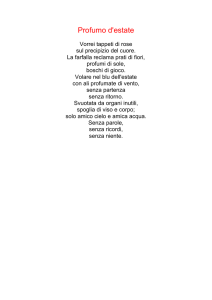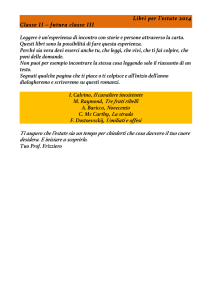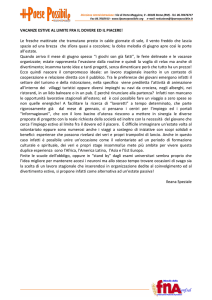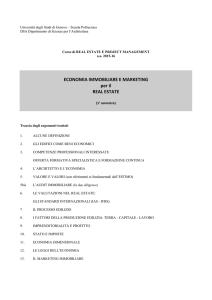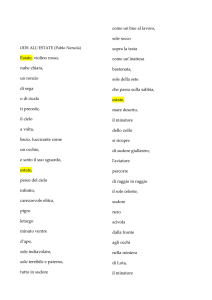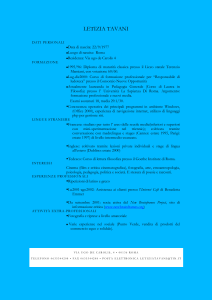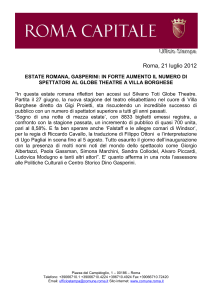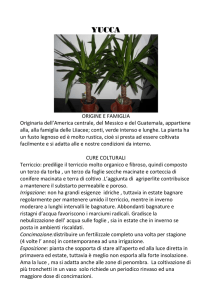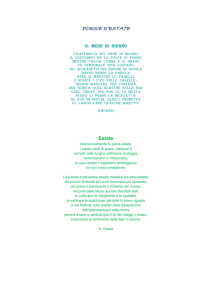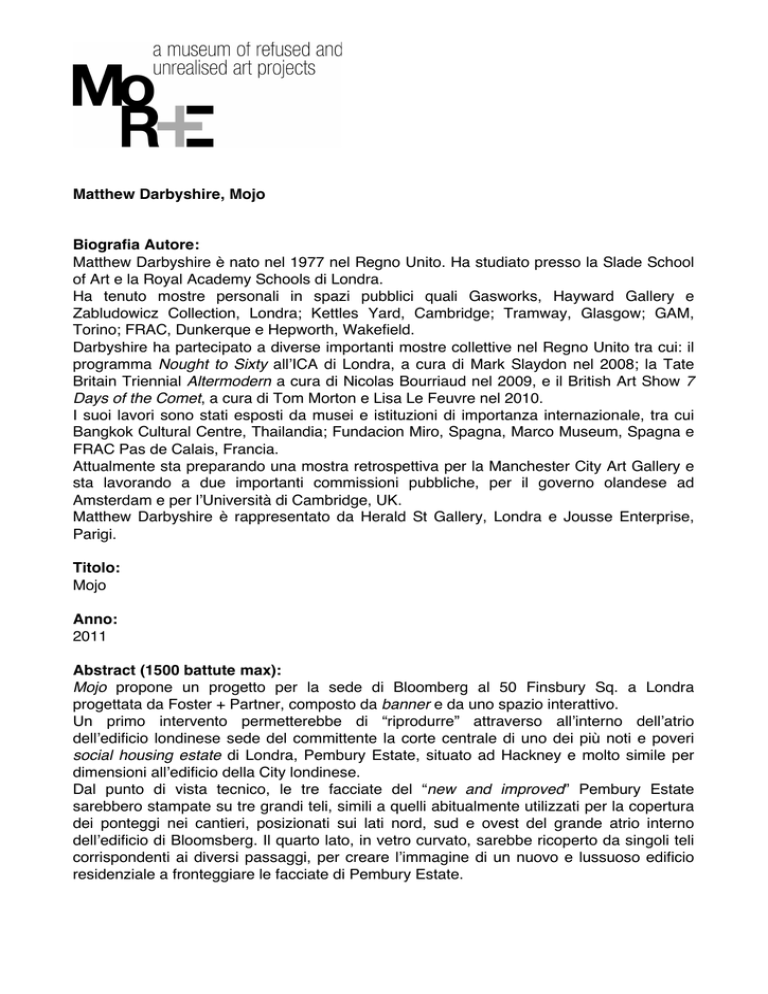
Matthew Darbyshire, Mojo
Biografia Autore:
Matthew Darbyshire è nato nel 1977 nel Regno Unito. Ha studiato presso la Slade School
of Art e la Royal Academy Schools di Londra.
Ha tenuto mostre personali in spazi pubblici quali Gasworks, Hayward Gallery e
Zabludowicz Collection, Londra; Kettles Yard, Cambridge; Tramway, Glasgow; GAM,
Torino; FRAC, Dunkerque e Hepworth, Wakefield.
Darbyshire ha partecipato a diverse importanti mostre collettive nel Regno Unito tra cui: il
programma Nought to Sixty all’ICA di Londra, a cura di Mark Slaydon nel 2008; la Tate
Britain Triennial Altermodern a cura di Nicolas Bourriaud nel 2009, e il British Art Show 7
Days of the Comet, a cura di Tom Morton e Lisa Le Feuvre nel 2010.
I suoi lavori sono stati esposti da musei e istituzioni di importanza internazionale, tra cui
Bangkok Cultural Centre, Thailandia; Fundacion Miro, Spagna, Marco Museum, Spagna e
FRAC Pas de Calais, Francia.
Attualmente sta preparando una mostra retrospettiva per la Manchester City Art Gallery e
sta lavorando a due importanti commissioni pubbliche, per il governo olandese ad
Amsterdam e per l’Università di Cambridge, UK.
Matthew Darbyshire è rappresentato da Herald St Gallery, Londra e Jousse Enterprise,
Parigi.
Titolo:
Mojo
Anno:
2011
Abstract (1500 battute max):
Mojo propone un progetto per la sede di Bloomberg al 50 Finsbury Sq. a Londra
progettata da Foster + Partner, composto da banner e da uno spazio interattivo.
Un primo intervento permetterebbe di “riprodurre” attraverso all’interno dell’atrio
dell’edificio londinese sede del committente la corte centrale di uno dei più noti e poveri
social housing estate di Londra, Pembury Estate, situato ad Hackney e molto simile per
dimensioni all’edificio della City londinese.
Dal punto di vista tecnico, le tre facciate del “new and improved” Pembury Estate
sarebbero stampate su tre grandi teli, simili a quelli abitualmente utilizzati per la copertura
dei ponteggi nei cantieri, posizionati sui lati nord, sud e ovest del grande atrio interno
dell’edificio di Bloomsberg. Il quarto lato, in vetro curvato, sarebbe ricoperto da singoli teli
corrispondenti ai diversi passaggi, per creare l’immagine di un nuovo e lussuoso edificio
residenziale a fronteggiare le facciate di Pembury Estate.
La “ricostruzione” delle case popolari del social housing estate sarebbe così realizzata
aggiungendo alcuni dettagli - nuovi balconi, rivestimenti in legno, superfici in vetro colorate
- a rinnovarne l’immagine, in riferimento alle frequenti simili operazioni che vedono negli
anni duemila questa tipologia di edifici “rinnovata” attraverso interventi architettonici e
operazioni immobiliari, rendendoli “funky and affordable” ma provocando al tempo stesso
l’allontanamento più o meno forzato della maggioranza dei suoi originari abitanti.
Allo stesso modo il lato est dell’atrio stesso andrebbe a rappresentare un nuovo lotto di
appartamenti di lusso.
Sarebbe inoltre realizzato un ambiente interattivo tridimensionale “show home”: questo
andrebbe ad occupare il mezzanino del lato nord e riprodurrebbe un appartamento
modello di questo nuovo, rinnovato, social housing estate, pronto da essere mostrato a immaginari - potenziali clienti. Ovviamente riprodurrebbe esattamente gli spazi interni e la
loro disposizione in un tipico appartamento di 50 metri quadrati realizzato a Pembury
Estate, arredandoli con oggetti, immagini e pezzi di design che come in altri lavori
dell’artista - si pensi a Blades House (2008) oppure a Oak Effect (2012) - assumerebbero,
attraverso la loro non-specificità, un significato di critica verso le aspirazioni e le
preferenze di oggi.
Descrizione del progetto:
Mojo propone un progetto per la sede di Bloomberg al 50 Finsbury St., Londra, composto
da banner e da uno spazio interattivo.
Un primo intervento permetterebbe di “riprodurre” attraverso all’interno dell’atrio
dell’edificio londinese sede del committente la corte centrale di uno dei più noti e poveri
social housing estate di Londra, Pembury Estate, situato ad Hackney e molto simile per
dimensioni all’edificio della City londinese.
Dal punto di vista tecnico, le tre facciate del “new and improved” Pembury Estate
sarebbero stampate su tre grandi teli, simili a quelli abitualmente utilizzati per la copertura
dei ponteggi nei cantieri, posizionati sui lati nord, sud e ovest del grande atrio interno
dell’edificio di Bloomsberg. Il quarto lato, in vetro curvato, sarebbe ricoperto da singoli teli
corrispondenti ai diversi passaggi, per creare l’immagine di un nuovo e lussuoso edificio
residenziale a fronteggiare le facciate di Pembury Estate.
La “ricostruzione” delle case popolari del social housing estate sarebbe così realizzata
aggiungendo alcuni dettagli - nuovi balconi, rivestimenti in legno, superfici in vetro colorate
- a rinnovarne l’immagine, in riferimento alle frequenti simili operazioni che vedono negli
anni duemila questa tipologia di edifici “rinnovata” attraverso interventi architettonici e
operazioni immobiliari, rendendoli “funky and affordable” ma provocando al tempo stesso
l’allontanamento più o meno forzato della maggioranza dei suoi originari abitanti.
Allo stesso modo il lato est dell’atrio stesso andrebbe a rappresentare un nuovo lotto di
appartamenti di lusso.
Sarebbe inoltre realizzato un ambiente interattivo tridimensionale “show home”: questo
andrebbe ad occupare il mezzanino del lato nord e riprodurrebbe un appartamento
modello di questo nuovo, rinnovato, social housing estate, pronto da essere mostrato a -
immaginari - potenziali clienti. Ovviamente riprodurrebbe esattamente gli spazi interni e la
loro disposizione in un tipico appartamento di 50 metri quadrati realizzato a Pembury
Estate, arredandoli con oggetti, immagini e pezzi di design che come in altri lavori
dell’artista - si pensi a Blades House (2008) oppure a Oak Effect (2012) - assumerebbero,
attraverso la loro non-specificità, un significato di critica verso le aspirazioni e le
preferenze di oggi.
Il progetto si presenta, come richiesto, site specific, ricostruibile in altre sedi e interattivo, e
viene definito dall’artista come il più ambizioso affrontato fino a quel momento: riprende
infatti alcune modalità proprie del lavoro di Darbyshire, quali la ricostruzione di spazi interni
e abitativi in un differente contesto, la critica sociale attraverso precisi elementi del
linguaggio architettonico e del design e in generale la messa in luce di tutti gli aspetti dietro
al concetto di rigenerazione di uno spazio. Il progetto si interroga così sulle caratteristiche
dello spazio che lo avrebbe dovuto ospitare, sulla funzione del lavoro stesso, sulla
committenza e sulla pratica artistica di Darbyshire. Le scelta di lavorare su Pembury
Estate inoltre, oltre alla coincidenza spaziale, rimanda tanto al suo essere uno dei modelli
più celebri di questa tipologia abitativa e al tempo stesso uno dei luoghi in cui si sono svolti
- solo alcuni mesi prima - gli scontri dei London Riots.
Come scrive l’artista stesso:
“Mojo is not critical of its hosting institution, Bloomberg, but rather the broader social
institutions and values that effect us all - namely class, race, faith, demographic and
gender.
Mojo examines the line between the conflicting aspirations of comfort, security, profit and
style - deliberately deadpan and squeaky clean, Mojo talks of the soulless homogeneity of
much of the socalled “regeneration” efforts up and down the country and attributes its
wipe-clean sterility to an increasingly uptight and consumer-driven society. Whilst trying to
unravel exactly why so many of us allow ourselves to be hoodwinked in to the infantilized
candy-coated cool of contemporary times, Mojo encourages us to ask ourselves why we
accept with this such a degree of compromise - whether it be ergonomic, aesthetic,
geographic, social or economic.
Mojo looks at recent “urban renaissance” initiatives and hopes to raise questions around
the social knock-on effects such as wealth disparity, racial injustice, locale claustrophobia,
loneliness and paranoia whilst also simply surveying how these initiatives effect and play
out in all of our lives.”
Descrizione della documentazione del progetto:
1_M Darby BB prop.pdf
Pdf realizzato dall’artista per la presentazione del progetto, e contenente un’introduzione e
un concept generale, i dettagli tecnici, uno studio per possibili futuri sviluppi e
pubblicazioni, un primo budget, una timeline, un approfondimento critico e del possibile
aspetto filantropico del lavoro, la presentazione dell’artista con una breve rassegna
stampa, il tutto accompagnato da render e da un ampio apparato iconografico.
Committente e ulteriori informazioni sul progetto originale:
Il progetto è stato presentato alla multinazionale Bloomberg all’interno del programma di
esposizioni e installazioni per la sede Londinese al 50 di Finsbury Square, progettata dallo
studio di architettura Fosters & Partners. Attualmente l’atrio è occupato dall’installazione
NEST 2012 di Tobias Rehberger.
Motivo di mancata realizzazione:
Il progetto era stato pensato per essere presentato alla commissione che si sarebbe
aperta nel Marzo 2012. Il committente sceglierà invece di realizzare all’interno del suo
programma Bloomberg Space il progetto di Darbyshire intitolato Oak effect nell’aprile
2013.
Bibliografia specifica
Tom Morton, Matthew Darbyshire. Gasworks, “Frieze” 114, 114, April 2008.
Altermodern. Tate Triennial, a cura di Nicolas Bourriaud, Tate Publishing, London, 2009.
Skye Sherwin, Artist of the week 71: Matthew Darbyshire, “The Guardian”, Wednesday 20
January 2010.
Ned Beauman, an exhibition for modern living, “Frieze”, January-February 2011, p. 101.
Gilda Williams, British art show 7, “Artforum”, May 2011, pp. 296-7.
Chris Fite-Wassilak,Scott King and Matthew Darbyshire, “Art Review” 51, June 2011, p.
158.
Jonathan P. Watts, Postcard from Cambridge, “Frieze’s Blog”, August 20, 2012.
http://blog.frieze.com/postcard-from-cambridge/
James Cahill, ‘Deliberate Clichés’: An Interview with Matthew Darbyshire, “Apollo
Magazine”, March 18, 2014.
scheda a cura di:
Marco Scotti
pubblicato su MoRE museum il 01.02.2015
Artist:
Matthew Darbyshire was born in the UK in 1977. He studied Fine Art at the Slade School
of Art and at the Royal Academy Schools in London.
He has had solo public exhibitions at Gasworks, London; The Hayward, London; The
Zabludowicz Collection, London; Kettles Yard, Cambridge; Tramway, Glasgow; GAM,
Turin; The FRAC, Dunkirk and The Hepworth, Wakefield.
Darbyshire has exhibited in various major UK survey shows including the ICA’s Nought to
Sixty programme curated by Mark Slaydon in 2008, Tate Britains Triennial Altermodern,
curated by Nicolas Bourriaud in 2009, and the British Art Show 7 Days of the Comet,
curated by Tom Morton and Lisa Le Feuvre 2010.
Darbyshire's work has been exhibited worldwide at institutions including Bangkok Cultural
Centre, Thailand; Fundacion Miro, Spain, Marco Museum, Spain and The FRAC pas de
Calais, France.
He is currently preparing a survey exhibition for Manchester City Art Gallery and in the
process of realizing two large-scale public commissions – one for the Dutch government in
Amsterdam and the other for Cambridge University here in the UK.
Matthew is represented by Herald St Gallery in London and Jousse Enterprise in Paris.
Title:
Mojo
Year:
2011
Abstract:
Mojo is a project for the headquarters of Bloomberg 50 Finsbury Street, London, and
consists of banners and of an interactive space.
A first intervention would "reproduce" inside the atrium of the commissioner’s London
headquarters the central courtyard of one of the most famous and poor social housing
estate in London, Pembury Estate, which is located in Hackney and results very similar in
its size and plans to the City of London building.
From the technical point of view, the three sides of the "new and improved" Pembury
Estate would be printed on three large “building wraps”, similar to those perforated
banners used for covering the scaffolding inside construction sites, linstalled on the north,
south and west side of the great inner atrium of Bloomsberg HQ. The fourth side, made of
curved glass, would be covered by several smaller banners corresponding to the different
walkways, to create the image of a new luxury residential building to confront the facades
of Pembury Estate.
The "reconstruction" of the social housing estate would thus be realized by adding some
details - new balconies, wood paneling, glass coloured surfaces - to renew its image. This
aspect is a reference to several projects which in recent years "renewed" this typology of
buildings all over England, through architectonical interventions and real estate operations,
making them "funky and affordable" but at the same time causing the more or less forced
departure of the majority of its original inhabitants.
Similarly the east side of the atrium itself would represent a new batch of luxury
apartments.
Darbyshire also designed a 3D interactive "show home" environment: this installation
would occupy the mezzanine of the north side of the Bloomberg HQ and would reproduce
an apartment of this new, renewed, social housing estate, ready to be shown to the imaginary - potential customers. It would reproduce exactly the volumes and plans of a
typical Pembury Estate 50 square meters apartment, which will be furnished with
contemporary objects, images and design pieces that would, through their non-specificity,
manage “to epitomize and critique the aspirations and taste preferences of our time”, as
we can see in other works of the artist such as Blades House (2008) or Oak Effect (2012).
Project review:
Mojo is a project for the headquarters of Bloomberg 50 Finsbury Street, London, and
consists of banners and of an interactive space.
A first intervention would "reproduce" inside the atrium of the commissioner’s London
headquarters the central courtyard of one of the most famous and poor social housing
estate in London, Pembury Estate, which is located in Hackney and results very similar in
its size and plans to the City of London building.
From the technical point of view, the three sides of the "new and improved" Pembury
Estate would be printed on three large “building wraps”, similar to those perforated
banners used for covering the scaffolding inside construction sites, linstalled on the north,
south and west side of the great inner atrium of Bloomsberg HQ. The fourth side, made of
curved glass, would be covered by several smaller banners corresponding to the different
walkways, to create the image of a new luxury residential building to confront the facades
of Pembury Estate.
The "reconstruction" of the social housing estate would thus be realized by adding some
details - new balconies, wood paneling, glass coloured surfaces - to renew its image. This
aspect is a reference to several projects which in recent years "renewed" this typology of
buildings all over England, through architectonical interventions and real estate operations,
making them "funky and affordable" but at the same time causing the more or less forced
departure of the majority of its original inhabitants.
Similarly the east side of the atrium itself would represent a new batch of luxury
apartments.
Darbyshire also designed a 3D interactive "show home" environment: this installation
would occupy the mezzanine of the north side of the Bloomberg HQ and would reproduce
an apartment of this new, renewed, social housing estate, ready to be shown to the imaginary - potential customers. It would reproduce exactly the volumes and plans of a
typical Pembury Estate 50 square meters apartment, which will be furnished with
contemporary objects, images and design pieces that would, through their non-specificity,
manage “to epitomize and critique the aspirations and taste preferences of our time”, as
we can see in other works of the artist such as Blades House (2008) or Oak Effect (2012).
The project is, as required, “site specific, relocatable and interactive”, and is defined by the
artist himself as his most ambitious: it builds upon some of Darbyshire working modalities,
such as the reconstruction of the interior and living spaces and in a different context, the
social criticism through precise elements of the architecture and design language and in
general the highlighting of all the aspects behind the idea of “regeneration” of an area. The
project then raise questions about the space that should host the intervention, the function
of the artwork itself, and the artistic practice of Darbyshire. The choice to work on Pembury
Estate also refers not only to the spatial coincidence between the two buildings, but also to
the fact that it is at the same time one of the most famous models for this kind of housing
and one of the places where the London Riots took place just a few months before.
As the artist states in the project description:
“Mojo is not critical of its hosting institution, Bloomberg, but rather the broader social
institutions and values that effect us all - namely class, race, faith, demographic and
gender.
Mojo examines the line between the conflicting aspirations of comfort, security, profit and
style - deliberately deadpan and squeaky clean, Mojo talks of the soulless homogeneity of
much of the socalled “regeneration” efforts up and down the country and attributes its
wipe-clean sterility to an increasingly uptight and consumer-driven society. Whilst trying to
unravel exactly why so many of us allow ourselves to be hoodwinked in to the infantilized
candy-coated cool of contemporary times, Mojo encourages us to ask ourselves why we
accept with this such a degree of compromise - whether it be ergonomic, aesthetic,
geographic, social or economic.
Mojo looks at recent “urban renaissance” initiatives and hopes to raise questions around
the social knock-on effects such as wealth disparity, racial injustice, locale claustrophobia,
loneliness and paranoia whilst also simply surveying how these initiatives effect and play
out in all of our lives.”
Project materials review:
1_M Darby BB prop.pdf
Pdf file created by the artist to present of the project: it contains an introduction and a
general concept, the technical details, a study for possible future developments and
publications, a budget, a timeline, a critical text and an evaluation of the philanthropic
aspects of the work, followed by the presentation of the artist with a brief press release.
Everything is accompanied by renders and a wide iconographic apparatus.
Commissioner and other information about the original project:
The project was presented to news and media company Bloomberg for its program of
exhibitions and installations at its London 50 Finsbury Square headquarters, designed by
the architectural firm Fosters & Partners. Currently the hall is occupied by the installation
NEST 2012 by Tobias Rehberger.
Unrealized project: reason why
The project should have been presented for the commission that would open in March
2012. The commissioner will choose instead to realise in April 2013 within its Bloomberg
Space program the Darbyshire installation titled Oak effect.
Dedicated bibliography:
Tom Morton, Matthew Darbyshire. Gasworks, “Frieze” 114, 114, April 2008.
Altermodern. Tate Triennial, a cura di Nicolas Bourriaud, Tate Publishing, London, 2009.
Skye Sherwin, Artist of the week 71: Matthew Darbyshire, “The Guardian”, Wednesday 20
January 2010.
Ned Beauman, an exhibition for modern living, “Frieze”, January-February 2011, p. 101.
Gilda Williams, British art show 7, “Artforum”, May 2011, pp. 296-7.
Chris Fite-Wassilak,Scott King and Matthew Darbyshire, “Art Review” 51, June 2011, p.
158.
Jonathan P. Watts, Postcard from Cambridge, “Frieze’s Blog”, August 20, 2012.
http://blog.frieze.com/postcard-from-cambridge/
James Cahill, ‘Deliberate Clichés’: An Interview with Matthew Darbyshire, “Apollo
Magazine”, March 18, 2014.
Curated by:
Marco Scotti
Published on MoRE museum 01.02.2015

